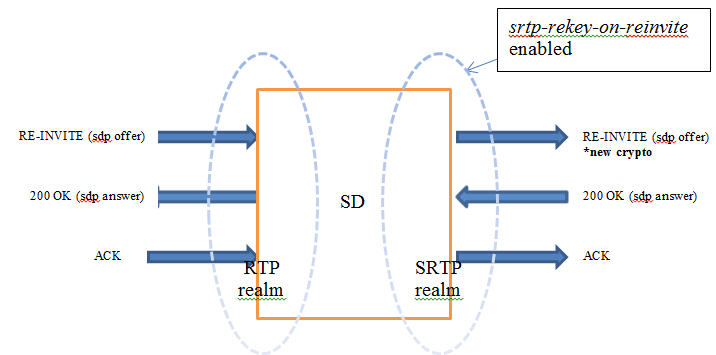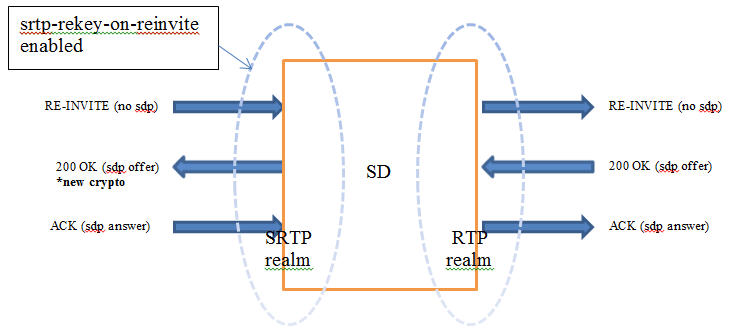SRTP Re-keying
Initialization of SRTP re-keying is supported by the Oracle® Enterprise Session Border Controller.
The Oracle® Enterprise Session Border Controller can generate a new outbound crypto attribute in the SDP offer in a SIP re-INVITE when the srtp-rekey-on-reinvite parameter is set to enabled. The system generates the attribute regardless of the state of the flow, active or not.
This capability is important for some clients that reside on the SRTP side in a single SRTP termination mode configuration. Any media changes that happen in the RTP side are hidden by the Oracle® Enterprise Session Border Controller. This concealment may cause issues in some configurations, where media servers are involved. When the media changes from media server to called phone, the SRTP endpoint is not aware the media source changed because the SDP offer from the Oracle® Enterprise Session Border Controller is the same as original invite. The result is that some devices drop packets because of Synchronization Source Identifier (SSRC) values mismatch, unexpected jumps in sequence number, sequence number reversions back to 1 triggering replay attack defense, and so forth. In certain environment is has been found that re-keying on every re-invite eliminates all these issues especially in customer setups that use Microsoft Lync products.
The processing of standard RE-INVITES (those containing an SDP offer) and offerless RE-INVITES is shown below.
With SDP:

No SDP:

If the re-invite message is a refresh and srtp-rekey-on-reinvite is enabled, the outbound crypto will change but the SDP version will not be incremented on the outgoing invite. If this scenario causes incompatibility issues with customer equipment then add the unique-sdp-id option to media-manager->option configuration so the Oracle® Enterprise Session Border Controller increments the SDP version in the outgoing invite.



